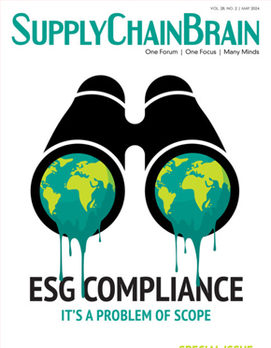
Nearly two years into the pandemic, the future of the workplace remains unclear. Many companies still have employees working from home full-time. Others that have reopened offices are allowing people to work a few days remotely, only requiring them to commute part of the week. Though many supply chain jobs still require boots on the ground, office workers who perform the bulk of their responsibilities on a computer can now work from anywhere.
While remote work can be a perk for many employees, it also creates new challenges for companies. When workers aren’t concentrated in a controlled office environment, it becomes more difficult for businesses to manage the risks they inevitably encounter. In this new normal, does the company’s obligation to ensure employee safety extend to the home, as it does when they’re working from the office or traveling on company business? If it does, companies must develop new safety protocols and invest in different technologies that secure the safety of remote and mobile workers.
Expanding Protections for the Worker
One of the challenges of workforces going hybrid or fully remote is security. When employees are all in the office, things like keycards, security guards and emergency response plans can help keep them safe in the event of a natural disaster, building fire, active shooter and other safety threats. But with workers scattered among co-working spaces, hotels, homes, coffee shops and dozens of other locations, companies won’t have as much control over their physical safety. Not only is it important to ensure the safety and well-being of employees, but knowing their location and status is also key to protecting company assets such as technology and data.
Certain apps and telematics tools allow companies to track employee locations using their smartphones. However, while these technologies can help a business investigate an incident after the fact, they generally can’t help an employee react to a safety threat in the moment. Of course, most employees could use their smartphone to call emergency services for help, or even set off a loud alarm that eventually connects to 911. But not every emergency situation allows for a person to pull out a phone and use it.
For example, a phone isn’t able to detect if someone slipped and fell or experienced one of the thousands of other emergencies that can occur while working. With a cell phone, the user is still required to be conscious and within range of the device to call for help. In the case of mobile workers and lone workers, cell phones aren’t the most reliable or function-rich option for tracking and monitoring employee safety and health. If a lone worker is confronted by a hostile third party, the cell phone is often the first item taken to prevent a call for help.
Protection by Wearable Devices
In emergency situations, there’s a better solution than traditional cell phones or smartphones: wearable devices that automatically report changes that could indicate an emergency. There are devices that a worker could easily utilize to express the need for help without having to speak or make much of a movement, such as mobile personal emergency response system (mPERS) devices similar to those used by seniors for years. They feature a help button that can be pressed to alert emergency responders. These types of technology have become more beneficial because they no longer require a base station from which to place calls.
Like other wearables, mPERS devices are small and lightweight. They provide state-of-the-art location reporting and offer built-in fall-advisory capabilities. Wearables with this type of functionality are able to detect horizontal and vertical movement. But they take safety a step further than simply reporting a fall on the job via a text message or red flag in a software system. mPERS devices can also eliminate the need for the worker to initiate a call for help. Instead, they can trigger one automatically. And cloud-based technologies make it possible for central stations to immediately respond to the emergency.
Another benefit of mPERS devices over cell phones is long battery life. Unlike phones that sometimes have to be charged multiple times a day, mPERS devices have fewer functions and don’t need to be active at all times. They can be left off or in hibernation mode until the SOS button on the device is pressed. Once this action occurs, location information can be sent to a central reporting destination and an emergency call can be placed. This enables mPERS devices to run on a single charge lasting between two and 30 days, depending on the configuration and use of the device.
mPERS devices can also help HR departments automate reports of any safety incidents that mobile workers encounter during their workdays. Software platforms can track the location, time, date and other particulars of each SOS incident, as well as any potential falls that could lead to a health insurance claim.
Companies considering mPERS devices as a safety layer for remote workers should take several factors into account when selecting models and vendors. One to keep in mind is that cell phone providers are in the midst of upgrading networks to 5G coverage. Companies will need to make sure they’re providing mPERS devices to employees that are compatible with the generation of cell phone networks in their area. And since upgrades are ongoing, companies will also want to make sure they can upgrade employees’ devices down the road if necessary.
Equipping employees with a device that can help connect to emergency responders in the event of an emergency not only provides a safeguard for the company, but also peace-of-mind to employees, demonstrating that their employer cares about their health and well-being, in the office and out.
Chris Holbert is chief executive officer of SecuraTrac.




.jpg?height=100&t=1715228265&width=150)


